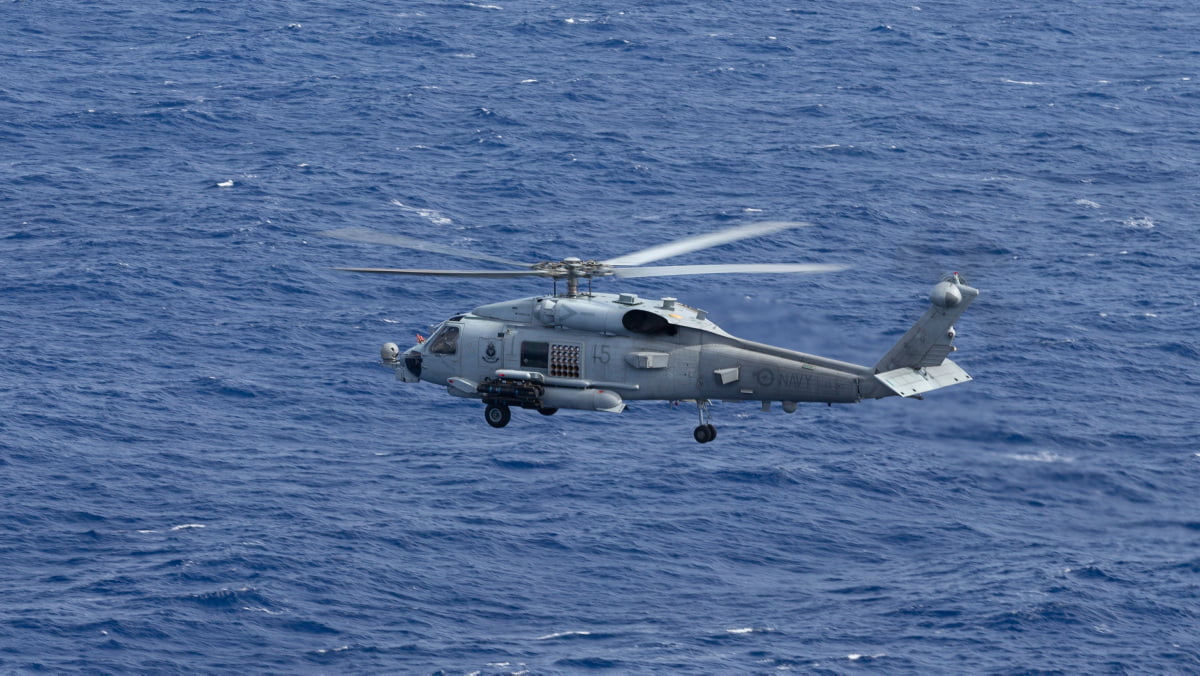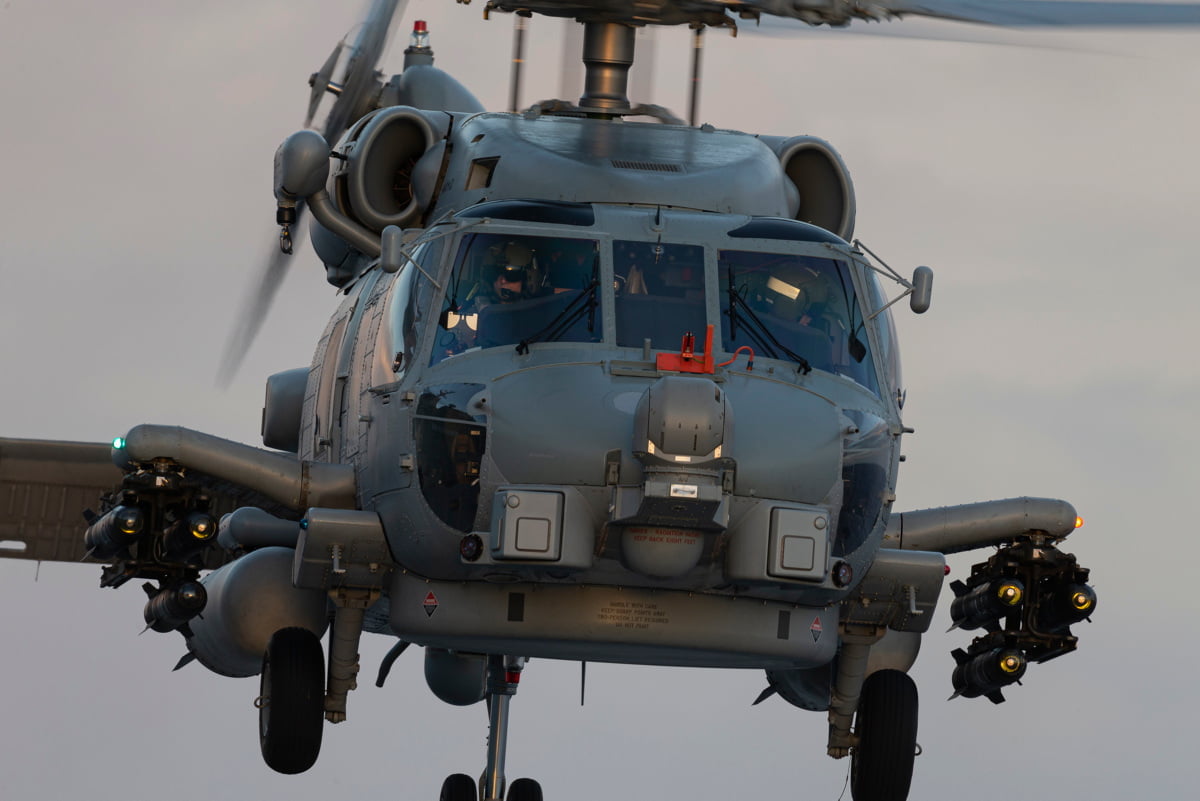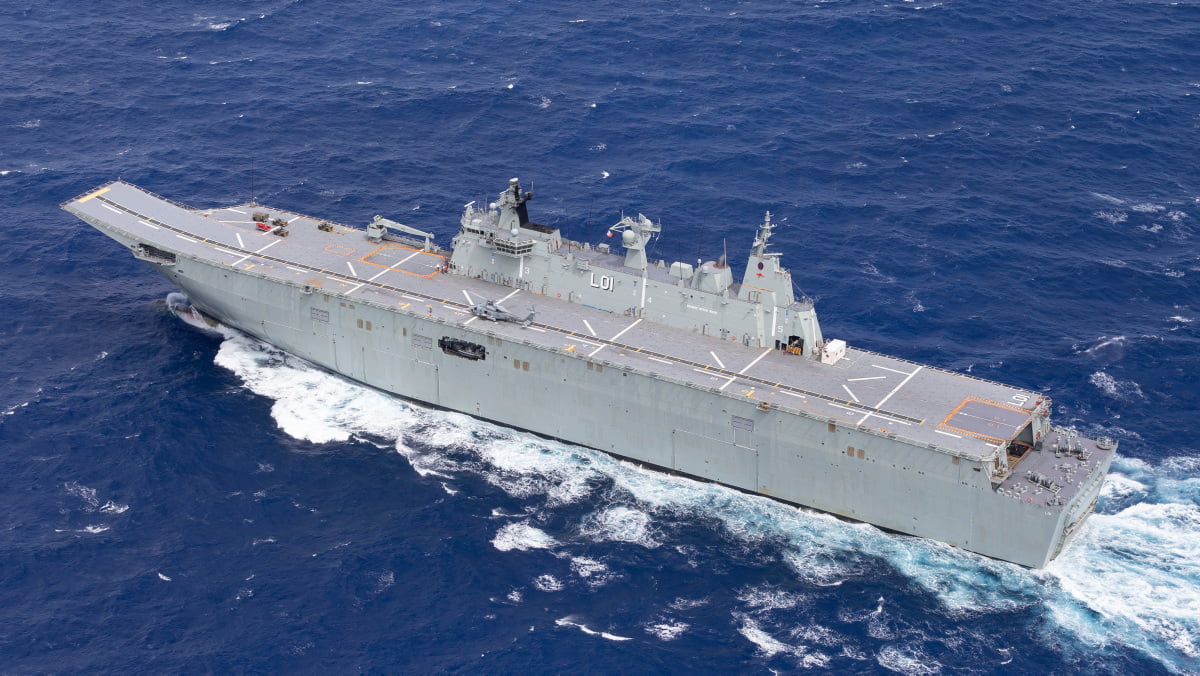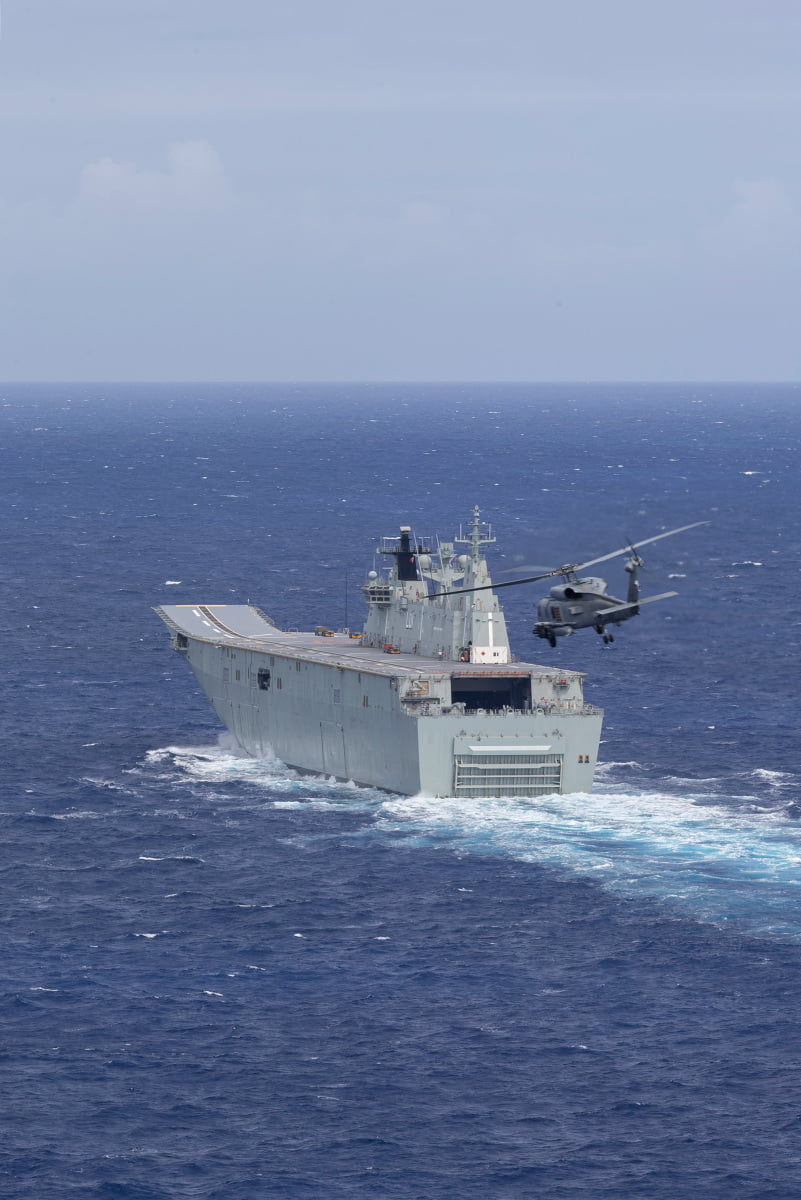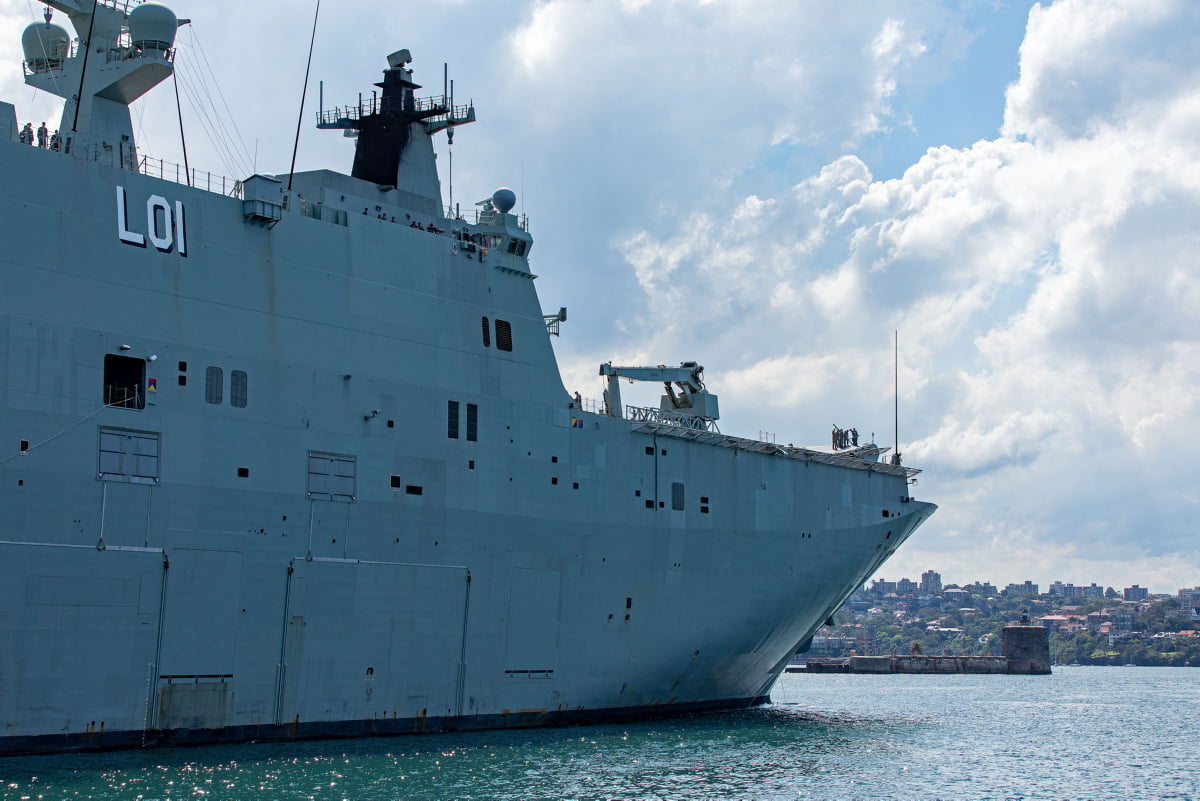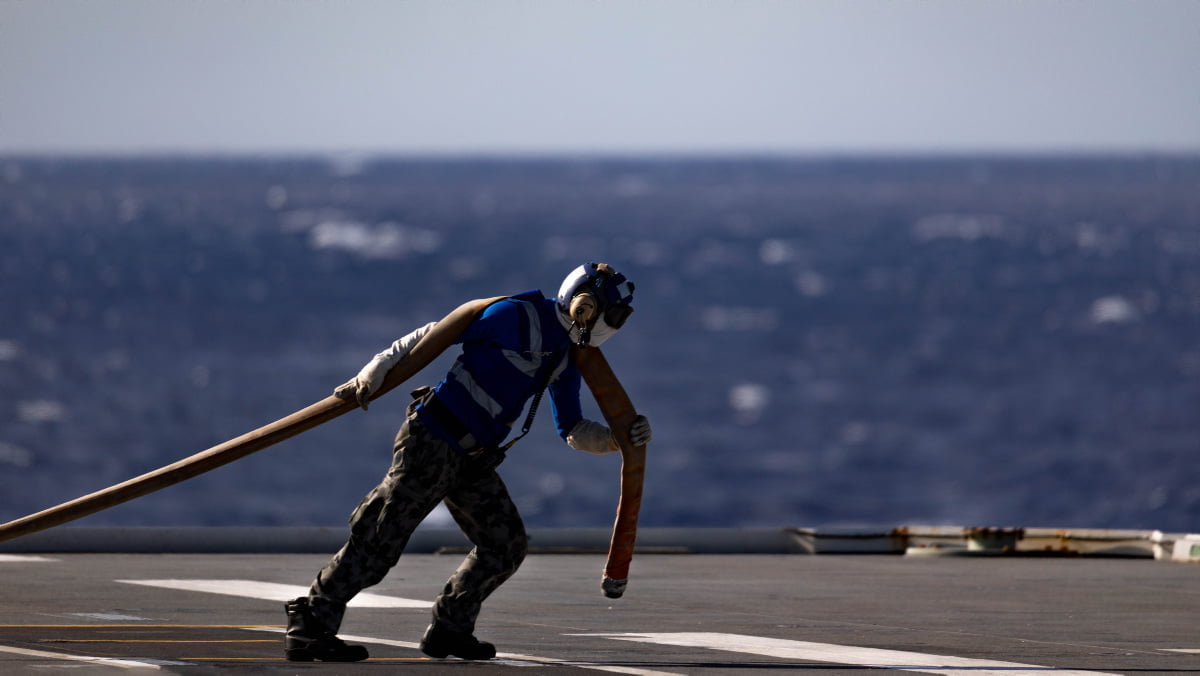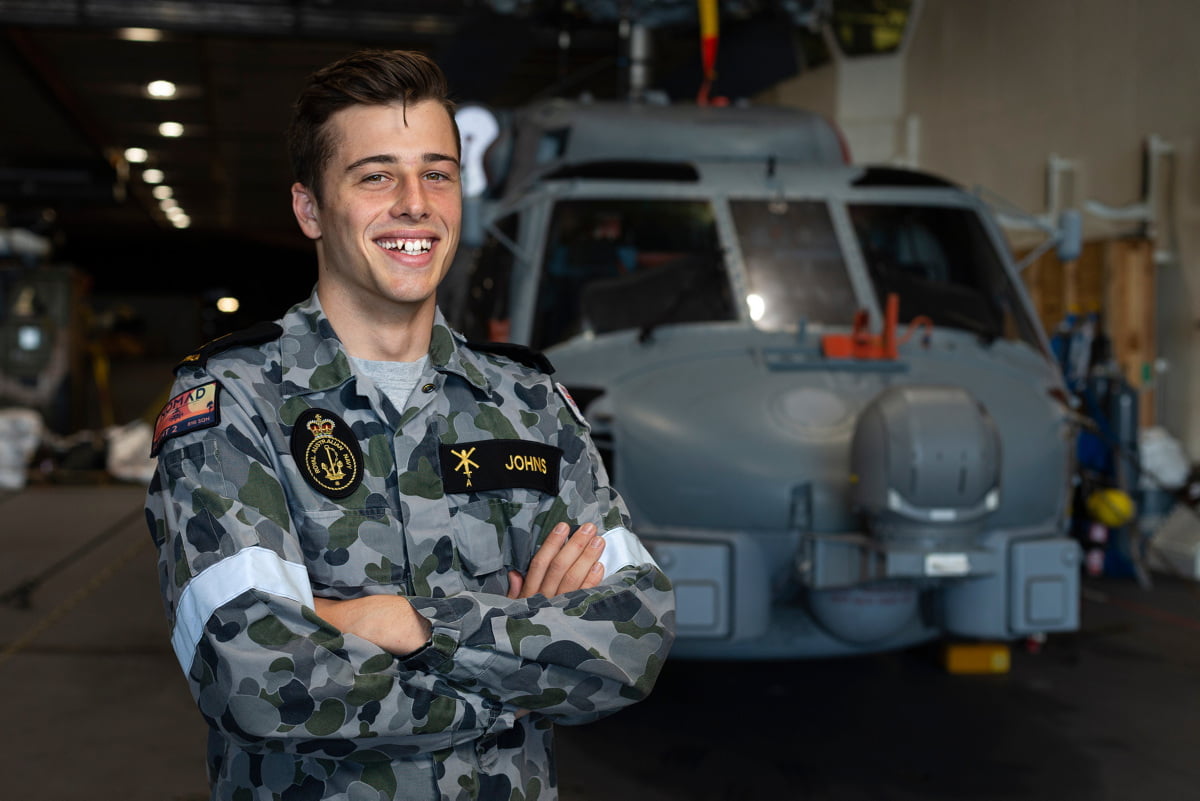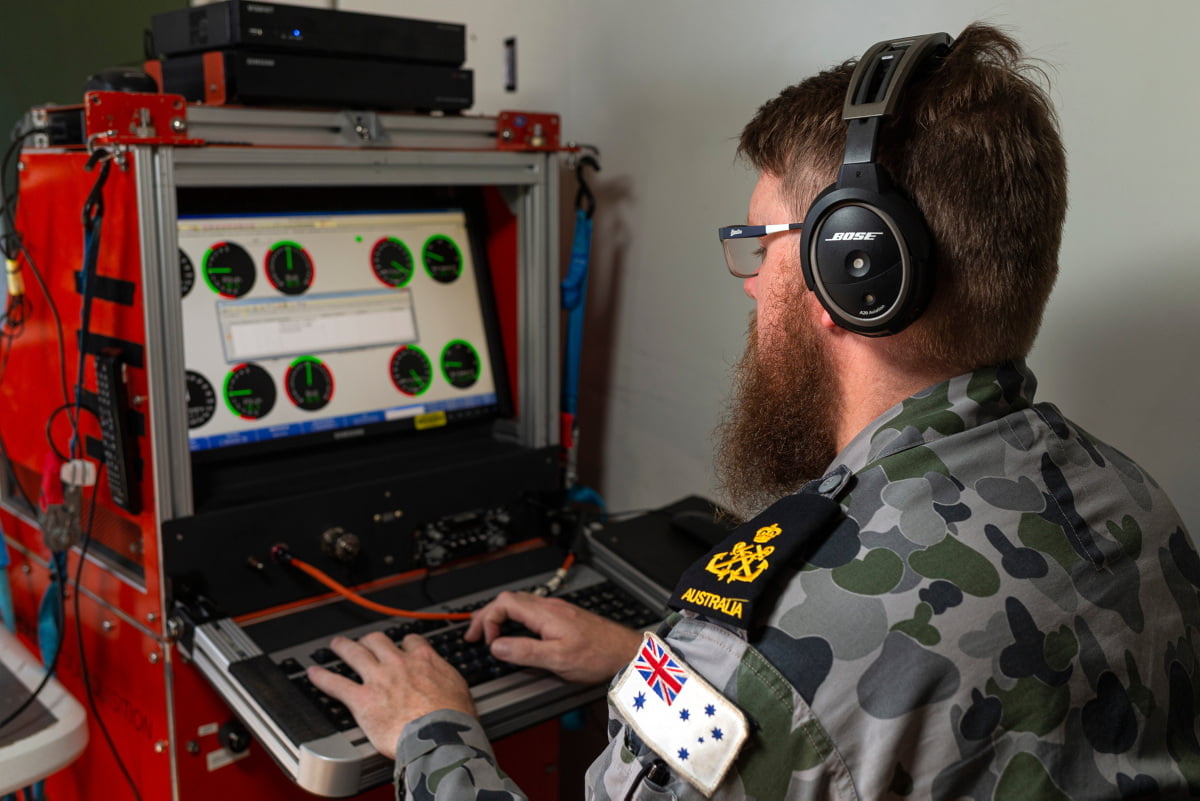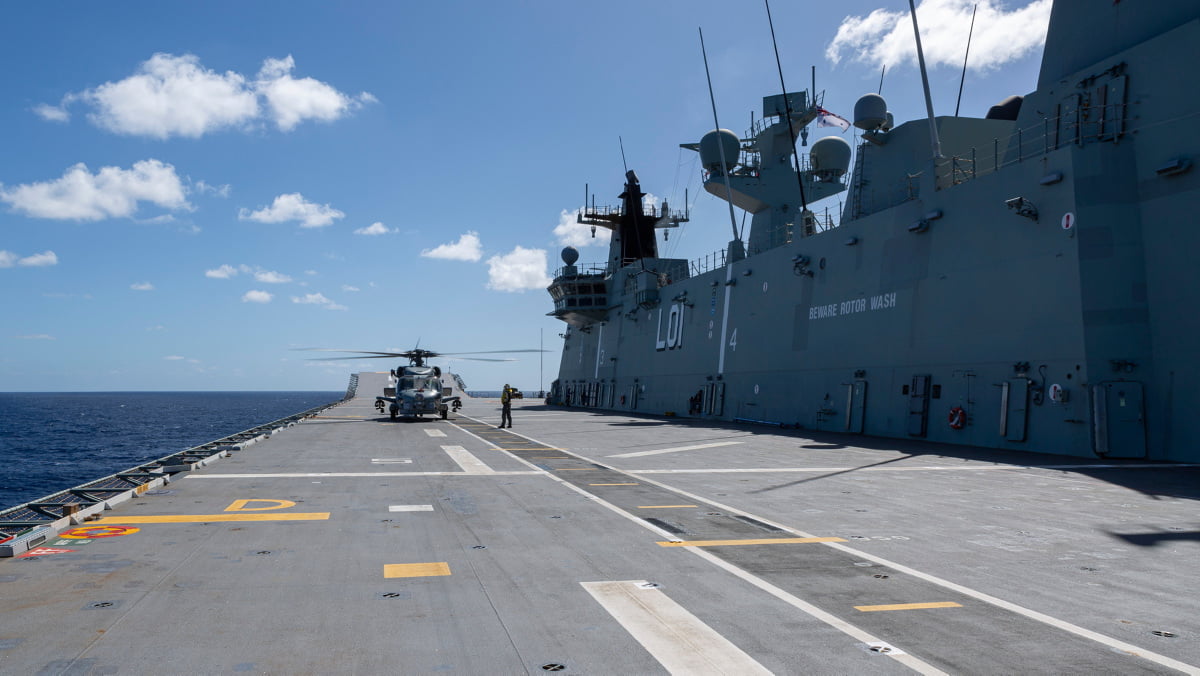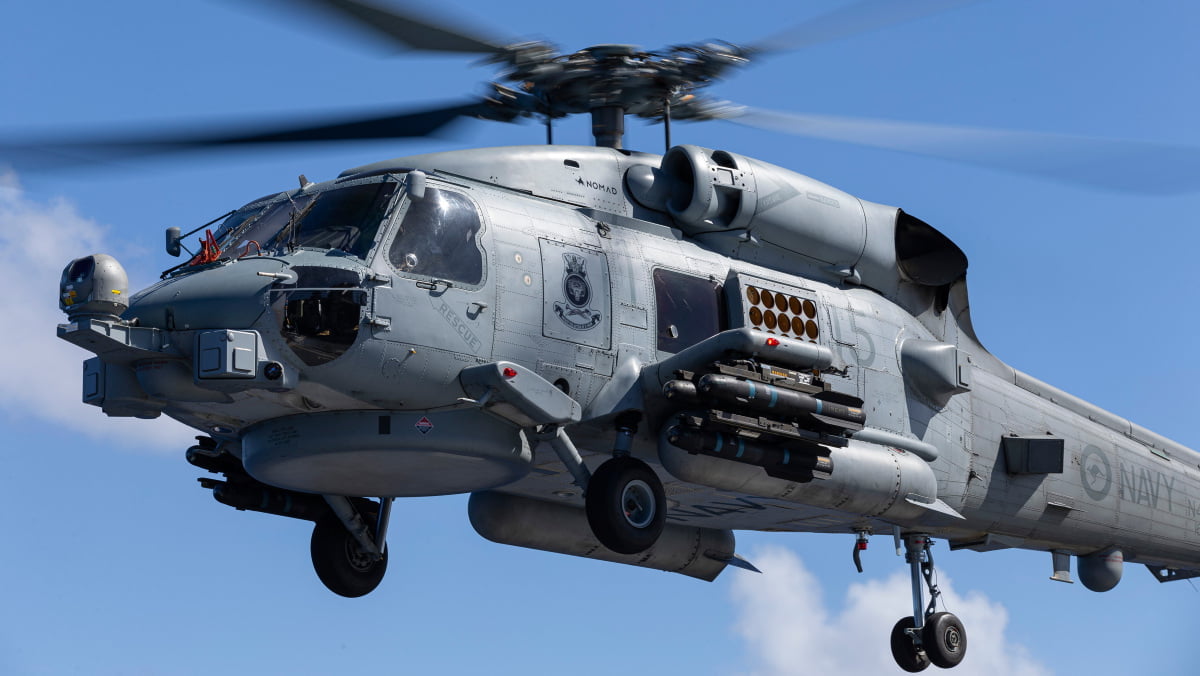MH-60R ‘Romeo’ helicopter may not be a stealth platform, but it has become a globally used platform by the US Navy and U.S. allies and has done so in barely noticed fashion.
Globally is a key aspect of a platform, even with different systems onboard common platforms, common logistics and platform support across the demanding maritime environment is a clear plus for the US Navy and the global partners with whom they work.
In a recent article published April 7, 2020 by the Royal Australian Navy, LEUT Geoff Long (author), ABIS Jarrod Mulvihill (photographer) highlighted the coming of the Romeo to its latest ship, HMAS Adelaide.
HMAS Adelaide has left its home port in Sydney to conduct First of Class Flight Trials for the MH-60R ‘Romeo’ helicopters off the coast of Queensland.
The trials will determine the safe operating limits of the Romeo helicopters on the Landing Helicopter Dock (LHD) in a range of sea states and wind speeds at both day and night.
Adelaide’s Commanding Officer, Captain Jonathan Ley, said the training was essential to ensuring Navy maintains its readiness to conduct Humanitarian Assistance and Disaster Relief operations in support of the Australian public and our neighbours if required.
“The results will provide a new standard of operational capability, informing how Navy can employ the MH-60R and LHD together in the future to increase both lethality in combat, and responsiveness during humanitarian assistance and disaster relief tasks,” Captain Ley said.
The Australian Defence Force is supporting Whole-of-Government COVID-19 efforts while maintaining operational preparedness.
Captain Ley said Navy had put in strict measures on its ships to ensure the continuation of essential training while preserving the health and welfare of its people.
All crew on Adelaide were screened for COVID-19 symptoms before departure.
At sea, health threats including communicable diseases like COVID-19, are deliberately considered as part of force health protection.
Major Fleet Units deploy with a medical officer or an appropriately trained medical team who are capable of screening and providing care to any personnel with symptoms.
“Adelaide is currently the Navy’s High Readiness Vessel and may be tasked by the Australian Government to respond to emergencies across the region, including support to civil authorities in Australia, or overseas, in their efforts against COVID-19. It is imperative that we maintain that high readiness capability, and provide reassurance that ADF can respond immediately even in times of crisis,” Captain Ley said.
The MH-60R ‘Romeo’ helicopter, based at 816 Squadron in Nowra, New South Wales, is the Navy’s next generation submarine hunter and anti-surface warfare helicopter.
The trials are a crucial testing process to establish the true extent of how the MH-60R operates in the maritime environment on Navy’s various platforms.
Lieutenant Commander Chris Broadbent of the Aircraft Maintenance and Flight Trials Unit said the trials include aviation facilities assessments, equipment calibration, and evaluation of the interface between a particular helicopter type and class of ship.
“While MH-60R aircraft have been used on HMA Ships Adelaide and Canberra for some time, new tests are required to determine what new safe operating limits they can achieve when working together,” Lieutenant Commander Broadbent said.
The flight trials will be conducted in Queensland waters over the coming weeks and include actively chasing the right weather conditions to adequately prove capability.
See the following story about the Indian Navy joining the Seahawk global enterprise:
indian-navy-to-acquire-seahawk-helicopters
The kind of cross-deck flexibility being demonstrated by the RAN’s Romeo helicopters could well affect the way ahead for Army Aviation. If cross-deck flexibility is prioritized, this perspective could well impact the current Army Armed Reconnaissance Helicopter competition.
In this March 6, 2020 article by Mike Yeo published by Defense News, the cross-deck flexibility of the Romeo was highlighted.
The Royal Australian Navy has managed to integrate the Sikorsky MH-60R Seahawk naval helicopter with a range of vessels that were not included in the original plans when Australia decided to acquire the type, according to the deputy commander of the RAN’s Fleet Air Arm.
Speaking to media during a visit at the invitation of simulation provider CAE to the naval base at HMAS Albatross, located in Nowra, south of Australia’s largest city Sydney, Capt. Grant O’Loughlan touted the MH-60R’s capabilities and interoperability with U.S. Navy systems, even as the service retains the autonomy to customize the helicopter for its unique needs.
The additional vessels with which the helo is compatible include the RAN’s support ships and the Canberra-class landing helicopter docks used for amphibious operations. O’Loughlan noted that “the range of missions that this helicopter can undertake is significant.”
The diverse mission sets range from maritime domain awareness, electronic warfare, vertical replenishment, and search and rescue thanks to its extensive onboard suite of networked systems in addition to its primary anti-submarine warfare role.


